Institutskolloquium
In jedem Lehrsemester lädt unser Institut Wissenschaftler mit unterschiedlichem Hintergrund und Fachwissen auf dem Gebiet der Geowissenschaften ein, um ihr Wissen mit seinen Mitarbeitern und Studenten zu teilen. Finden Sie hier heraus, wer im aktuellen Semester am IFG spricht! (Inhalt in Englisch/Deutsch)
Persönliche Kolloquien finden in Gebäude IA, Raum 01/473 um 16 Uhr statt. Für hybride oder vollständig online abgehaltene Kolloquien wird Ihnen im Vorfeld ein Zoom-Link über Moodle zugesandt.
Winter Semester 2025/2026
16. October
Mohamed Faris; Philipp Wachtel
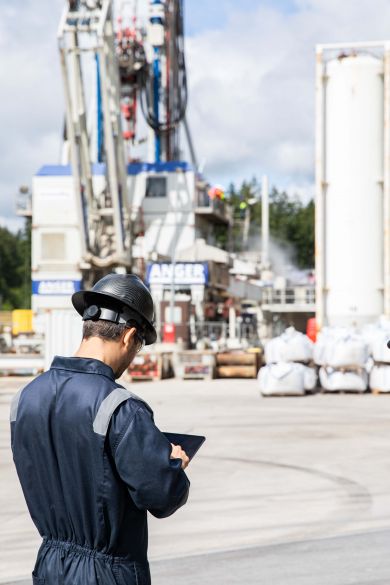
Title: Sirius-ES - Innovative Drilling Solutions for Excellent Results
Sirius-ES specializes in executing complex drilling projects within the oil, gas, and geothermal industries as well as the infrastructure construction sector. The company maintains a core focus on drilling fluids, delivering a comprehensive portfolio of professional services tailored to all categories of Deep Drilling (DD) and Horizontal Directional Drilling (HDD) operations. Key areas of expertise include the engineering and formulation of drilling fluids, the supply of products for drilling fluid preparation, and the technical supervision of fluid parameters at drilling sites. Additionally, Sirius-ES possesses advanced capabilities in the conditioning of drilling fluids utilizing specialized equipment, as well as the management and environmentally compliant disposal of drilling mud.
Note: Company presentation
Raum 01/473; 16:00 Uhr
language of presentation: english
27. October, room 02/473 at 4 pm
Guillermo E. Alvarado, Ph.D.
Title: Geological framework and history of Costa Rica (Central America). From ophiolites to an active magmatic chain
Guillermo E. Alvarado, Geological Sciences Research Center, University of Costa Rica
A brief summary will be presented on the formation of the present Costa Rica in the last 200 million years and several aspects still to be resolved from the geological and geoarchaeological point of view.
Room 02/473 at 4 pm
06. November, room IA 01/481
Dra. Paula Santi Malnis
Title: DISTRIBUTIVE FLUVIAL SYSTEMS: examples of the San Juan Province Argentina
Distributive fluvial systems (DFS) are a relatively new depositional model (Nichols and Fisher 2007; Hartley et al 2010) of continental environments that includes previous environmental models defined in high aggrading basins of seasonal arid settings. Since its definition, many researchers have focused on obtaining geomorphologic models for DFS, while its recognition in the rock record is still under debate. A key characteristic of a DFS is the downstream decrease in the capacity and competence of channels and stream-flow sedimentary processes. The Argentina foreland basins display DFS as its dominant depositional style. Currently, DFS facies serve as aquifers that provide the main water source for many Andean cities. Additionally, these areas support agricultural activities, and the geological record preserves exceptional paleovertebrate bone beds. San Juan Province features various examples of DFS in both modern and geological contexts, enabling a better understanding of this environmental depositional model.
Speaker:
Dra. Paula Santi Malnis; Assistant Researcher CONICET
Head Professor of Remote Sensing Lectures of the FCEFN-UNSJ
13. November; room IA 02/473
Jun.-Prof. Dr. Miriam Christina Reiss
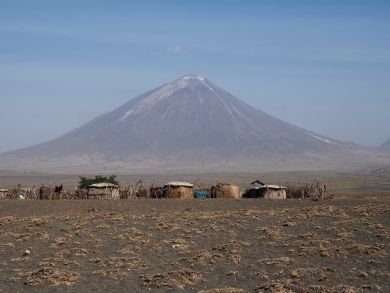
Title: Towards understanding magmatic systems with volcanic tremor
room IA 02/473; start: 11 am
28. January 2026
Julia Schmidt, M.Sc.
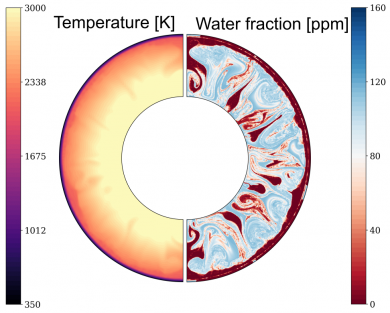
Title: Modeling the evolution of rocky planets: from element partitioning to global dynamics
In recent decades, global numerical models have made great progress and have become powerful tools for linking experimental studies and observations with physical processes. This broadens our understanding of the initial conditions and evolution of Earth and other terrestrial planets inside and outside the solar system, and helps us identify which small-scale interactions are affecting which larger-scale processes and to what extent. One example for this is element partitioning, which causes the redistribution of trace elements and volatiles from the upper mantle toward the crust. The amount of these redistributed elements and molecules can have a major influence on the planet’s thermal evolution and initial build-up of the atmosphere.
Sommer Semester 2025
14. Mai
Dr. Joel Mohren, RWTH Aachen
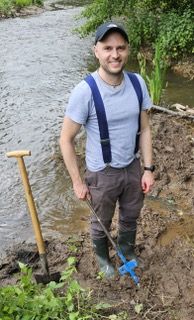
Title: Quantification of 239,24xPu in environmental samples – method development, applications and perspectives
Summary: The measurement of 239,240Pu in environmental samples can play a key role in investigating Earth (sub-)surface processes. Earth’s outermost skin has been enriched in such anthropogenic fallout radionuclides (FRNs) as a consequence of atmospheric nuclear weapon tests conducted in the 1950s and 1960s, providing distinct geochronological markers. The application of FRNs is well established, with 137Cs (and the naturally occurring 210Pb) being most commonly measured. However, 239,240Pu activities are more decay-insensitive (t1/2 239Pu: ~24.1 ka; 240Pu: ~6.6 ka), and there is less soil inventory contamination arising from nuclear power plant accidents compared to 137Cs. Additionally, only a few grams of sample material are required for a measurement.
Several years of research at the University of Cologne (UoC) have resulted in the development of tailored sample processing protocols that enable the routine extraction of 239,24xPu from environmental samples. The set of isotopes in focus is completed by 244Pu (t1/2 = 81.1 Myrs), whose natural abundances are of primordial origin with minimal interstellar influx (<1000 atoms cm-2 Myr-1). Any measurement of 239,24xPu can be calibrated against the Cologne Pu-multiisotope Standard (ColPuS). Furthermore, a significant increase in measurement precision of isotopic 239,24xPu concentrations has been achieved through Accelerator Mass Spectrometry (AMS), as compared to earlier methods such as conventional mass spectrometry or decay counting techniques. The development of such measurement capabilities at the UoC Centre for Accelerator Mass Spectrometry (CologneAMS) has enabled the exploration of the numerous potential applications of 239,240Pu in deciphering modern Earth (sub-)surface processes in different settings. The sample processing workflow, combined with the precision of AMS measurements, allows for resolving specific 239Pu activities below ~5 mBq kg-1 (~10-15og/g). Consequently, spatial focus is placed on study sites where ultra-high precision measurements are required, such as in drylands in the southern hemisphere. A recent study traces dust influx into CaSO4 crust in the Atacama Desert in northern Chile, while another application focuses on agroecosystems located in the Free State Province of South Africa. Here, plutonium concentrations indicate that SOM loss in arable land can primarily be caused by wind erosion dominating over other factors at play, such as mineralisation processes.
With the foundation for successful measurements of 239,24xPu being laid, future work aims to further increase the measurement precision of 240Pu at CologneAMS. Additionally, an alternative measurement method employing a next generation MS/MS MC-ICP-MS (Thermo Fisher Neoma) is being considered to improve measurement sensitivities as compared to older systems. Together with the prospective implementation of further advances made in chemical processing, the overall sample throughput for samples containing ultra-low concentrations of 239,24xPu may be increased.
18. Juni
Dr. Matt Ikari, Universität Bremen, Zentrum für Marine Umweltwissenschaften (MARUM)

Titel: Slow and not-so-steady: Studying fault behavior at plate-rate speeds
Despite many advances in earthquake science, the tendency for faults to host earthquake slip, aseismic slip or slow slip events is far from well understood. Existing data is usually gathered at slip velocities orders of magnitude faster than plate convergence rates; therefore, a fundamental question is how faults slip when driven at such slow velocities. I discuss here laboratory friction experiments conducted at cm/yr driving rates, simulating the natural in-situ forcing condition.
The dataset includes a wide range of materials in two groups: synthetic and natural gouges. The synthetic gouges are powders of nearly pure individual minerals, including various phyllosilicate species, and some common rock types. The natural gouges are sampled from fault zones or fault-related locations (e.g. subduction zone input sediments) by scientific drilling projects. The rock and mineral standards establish a basic and widely applicable framework for frictional behavior, whereas the natural fault samples can be connected to known, recorded slip events that have occurred at a specific major fault zones. Examples include the Nankai and Tohoku regions offshore Japan, the Hikurangi subduction zone offshore New Zealand, and the Middle America trench offshore Costa Rica.
Within this large dataset, the slow-driving experiments produce the full range of sliding modes: stick-slip instabilities representing fast earthquakes, slow slip events (SSEs), intermediate events that may be very-low-frequency earthquakes or tremor, and stable sliding. The steady-sliding materials can be evaluated with rate- and state-dependent friction laws to quantify velocity-strengthening or velocity-weakening frictional behavior, useful for predictions of fault slip in numerical models. Some intriguing results include a general difference in behavior between synthetic and natural samples, laboratory-reproduced SSEs in natural samples from regions where such events have been recorded, the confirmation of a “cutoff velocity” that causes SSEs in some natural samples, and the possibility that some SSEs occur as earthquake precursors.
2. Juli
Prof. Ilya Bindeman (University of Oregon)

Titel: O Isotope Evidence for the Recycling of Ocean Crust through the Mantle
Ilya Bindemann ist Isotopengeochemiker an der University of Oregon, USA. Kürzlich wurde ihm ein renommiertes Humboldt-Stipendium verliehen, das es ihm ermöglicht, in den kommenden Jahren auch an der Universität Mainz zu arbeiten. Seine Forschung konzentriert sich auf endogene und exogene Prozesse auf der frühen Erde. Zu den Fragen, die Ilya zu beantworten versucht, gehören: „Entstand frühes Leben auf einer heißen oder kalten Erde?“, „Wann entstanden die Kontinente?“ oder „Wann begann die Plattentektonik?“. In diesem Vortrag wird Ilya erläutern, wie das (dreifache) Sauerstoffisotopensystem in Bezug auf den Rückfluss von Oberflächenmaterial in den Erdmantel funktioniert, welche Signaturen Mantelplumes aufweisen, wie sich kontinentale Kruste bildet und welche Debatten es über die Bedingungen auf der frühen Erde gibt.
16. Juli 2025
Erick Prince (Institut für Geowissenschaften, RUB)
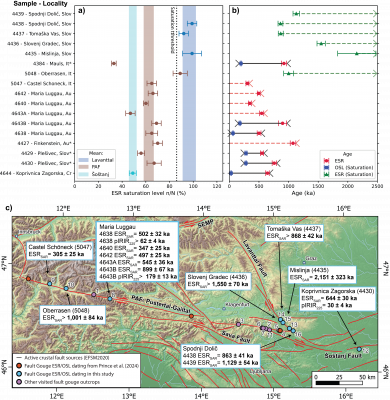
Figure 1: Summary of dating results including the a) ESR Saturation levels for the measured samples with the respective mean for each fault, b) minimum and maximum ages for the measured samples c) location of the samples along the PAF, Lavanttal Fault, and Šoštanj Fault with the respective ages. The results from Prince et al. (2024) are marked with an asterisk (*) in the upper panel. (Prince et al., accepted).
Identifying fossil fault activity along the eastern Periadriatic Fault system by combined OSL- and ESR-dating of fault gouges
Abstract: Faults regions with low deformation rates such as in the Eastern Alps accumulate strain over long periods, this results in faults with low slip rates and infrequent occurrence of large magnitude (Mw > 6) surface-rupturing earthquakes that may even remain undetected in instrumental and historical records. In the Eastern Alps, the Pleistocene glaciations further obscure seismic evidence by eroding or burying fault-related features, limiting the effectiveness of traditional paleoseismology. The Periadriatic Fault (PAF) System is one of the largest faults in the Alpine chain, with a main onset of activity during post-collisional lateral extrusion during the Oligocene to Miocene times, and slowing down in the second half of the Neogene. Its seismic activity is debated. The application of electron spin resonance (ESR, quartz) and optically stimulated luminescence (OSL, K-feldspar) dating to fault gouges allows to determine whether they released earthquakes during the Quaternary. These methods are sensitive to low temperatures (below 100 °C) and can record a system reset due to shear heating during surface-rupturing earthquakes. This approach was applied to the eastern PAF and two of its neighboring faults (Lavanttal Fault and Šoštanj Fault). The saturation level of the signals from the dating methods was used as a metric of seismic activity to compare between the faults.
Our findings revealed varying levels of Quaternary seismic activity among the studied faults (Figure 1). The Lavanttal Fault samples displayed a complete signal saturation (saturation level > 86 %) for ESR, indicating limited seismic activity since ~2 Ma. The gouges from the eastern PAF yielded ages across the Pleistocene, with maximum ages of the last complete reset of the system given by ESR ranging between 1,075 ± 48 and 305 ± 25 ka, and minimum ages given by the saturation of OSL signals ranging between 281 ± 16 ka and 62 ± 4 ka. The mean saturation level of 66 ± 4 % for ESR indicated similar levels of seismic activity along the fault. For the Šoštanj Fault, both systems were below saturation with levels of 49 ± 3 % and 14 ± 4 % for ESR and OSL, respectively, corresponding to ages of 644 ± 30 ka for ESR and 30 ± 4 ka for OSL. In this case, the results suggest a shorter earthquake recurrence interval than for the other two faults. Numerical models shed further information on the recurrence interval of the PAF, suggesting that surface-rupturing earthquakes along the PAF likely occurred at intervals between tens of thousands to over a million years, depending on the magnitude of the earthquakes.
This work demonstrates the utility of ESR and OSL dating methods in reconstructing the seismic history of faults in slowly deforming regions where traditional paleoseismology is limited, bridging the temporal gap between instrumental, historical, and long-term geological records, while also contributing to methodological developments. The approaches presented here have the potential to be extended to other intraplate fault systems with low deformation rates to improve regional seismic hazard assessments.
Kolloquium Archiv
Hier finden Sie eine Auflistung unserer Kolloquiumssprecher aus den vergangenen Semestern.